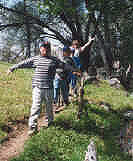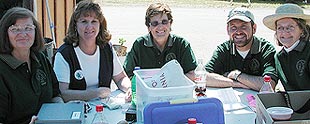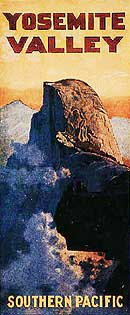| |

Front
Page
Activities
Administration
The
Ahwahnee
Artist
Palettes
Human History
EcoImpact
Indian
Legends
Natural
History
Master
Plan
Media & Bookstore
Museum
The
Naturalist
Park & Local
Cams
Pioneer
Cemetery
Road
Conditions
Search
Site
Reader's
Mail
Vistas & Views
Weather
Conditions
Yosemite
Guide
Advertise With Us
Masthead

Top
Stories
Yosemite Park
National Parks
Conservation
Sierra Nevada
Sierra Club
Forestry
Park Service

Bulldog News
California Star
Clovis Free Press
Daily Republican
Fresno Republican
Mother Wired
Reagan Library
SierraPortal.com
Tower District News
ValleyPress.com
WebPortal.com

Yosemite Bookstore
Ahwahnee
Hotel
Auto House of Clovis
Aluisi
Real Estate
Cerro Negro Music
Clovis Planetarium
Irene's Cafe Dining
Your Fresno Broker
FresnoIncomeProperties
Fresno Investment
RE
Majestic Pawn
Onomuse Productions
PC Paramedics
Presentations
Inc.
Roger
Rocka's
The 2nd Space
Tower 2000 Jukebox
Conserve Wetlands
|
|
 |
|
[an error occurred while processing this directive]

|
~Updated~
April 21, 2002
Science & Conservation
The Springville Nature Center
Experience
By
Thomas Hobbs, Education Editor
SPRINGVILLE -- The Clemmie
Gill School of Science and Conservation is a special
educational service of the Tulare County Superintendant of Schools.
SCICON is the outdoor school of
science and conservation operated by the Tulare County Office
of Education.
It is located on 1100 acres above Springville. Last
year, the school was visited by over 13,600 fifth- and sixth-grade
students for a one-day or week-long experience in outdoor education,
natural science and conservation.
 Leann Alstrom, a SCICON staff
member, told Yosemite News reporters the program is a product
of 40 years of school and community involvement. "In 1958,
Clemmie Gill donated the original 35-acre ranch to Tulare
County for use as an educational center for conservation,"
said Ms. Alstrom. "Since that time, volunteer labor and community
support has enabled this state-of-the-art environmental education
school to become a model for similar programs throughout the country,"
she said.
Leann Alstrom, a SCICON staff
member, told Yosemite News reporters the program is a product
of 40 years of school and community involvement. "In 1958,
Clemmie Gill donated the original 35-acre ranch to Tulare
County for use as an educational center for conservation,"
said Ms. Alstrom. "Since that time, volunteer labor and community
support has enabled this state-of-the-art environmental education
school to become a model for similar programs throughout the country,"
she said.
 SCICON plays host to its own natural history museum,
raptor center, planetarium, observatory, tree farm, and indigenous
plant garden. There are over 17 miles of trails, meadows, streams
and ponds which adorn this natural campus. Included on the site
is an outdoor amphitheater, 20 cabins for student housing, and
the spacious John Muir Lodge for group meetings and dining.
SCICON plays host to its own natural history museum,
raptor center, planetarium, observatory, tree farm, and indigenous
plant garden. There are over 17 miles of trails, meadows, streams
and ponds which adorn this natural campus. Included on the site
is an outdoor amphitheater, 20 cabins for student housing, and
the spacious John Muir Lodge for group meetings and dining.
A multi-media educational facility is
also available and designed to provide unique and exciting learning
experiences for kids.
The Center is located in the Pacific
SouthWest Forest Region area in the Sequoia National Forest
2500 feet above Porterville, Calif.
On Sunday, April 21, the 42nd annual
SCICON Barbecue and Wildflower Festival
was held on the campus. It's become a favorite local tradition
for Tulare Unified students, their families and the general public.
Musical groups from local schools performed live as hungry visitors
devoured tasty tri-tip sandwiches from a traditional deep pit
barbecue. 
Alex Price, casually dressed in jeans, leather belt, and
green shirt walked through the crowd toward a large table where
cash was being counted and secured by SCICON
staff in a large cash-box."Turnout for the Deep Pit BBQ was
much more than last year!"
Rick and other staff showed visitors
through the new lodge extension, raptor center and cabin
upgrades
sponsored by local supporters in Lindsay, Exeter,
Porterville,
Strathmore, Tulare, and Woodlake.
After lunch, SCICON
staff guided interested visitors on wildflower walks, bird watching,
and nature hikes. A dozen or more natural resource agencies also
participated with interactive displays geared toward science and
conservation insight.
[ Editor's Note: The
surrounding forest environment at SCICON extends from rolling
chaparral covered foothills to high alpine peaks on the Sierra
Nevada Crest. Vegetation, soils, and wildlife are diverse.  Three
major river systems drain the forests. Merced, San Joaquin, and
Kings rivers flow westward through deep canyons to the western
slopes and the San Joaquin Valley beyond. The forest provides
suitable habitat for more than 300 wild life species. Some of
these are on the endangered species list. Of particular concern
is the peregrine falcon and the bald eagle. The forest contains
1,800 miles of streams and rivers and nearly 500 lakes. The forest
contains many cultural resources including archeological, historical
and architectural sites and data of value to ethnic groups and
researchers. Zane G. Smith, Jr., the Pacific Southwest Region
forester informed the Yosemite News that since 1986, cultural
resources are considered a nonrenewable resource and receive
special attention in planning and conducting forest activities
because of Federal legal protection.] Three
major river systems drain the forests. Merced, San Joaquin, and
Kings rivers flow westward through deep canyons to the western
slopes and the San Joaquin Valley beyond. The forest provides
suitable habitat for more than 300 wild life species. Some of
these are on the endangered species list. Of particular concern
is the peregrine falcon and the bald eagle. The forest contains
1,800 miles of streams and rivers and nearly 500 lakes. The forest
contains many cultural resources including archeological, historical
and architectural sites and data of value to ethnic groups and
researchers. Zane G. Smith, Jr., the Pacific Southwest Region
forester informed the Yosemite News that since 1986, cultural
resources are considered a nonrenewable resource and receive
special attention in planning and conducting forest activities
because of Federal legal protection.]
Letter
to the Editor
Copyright 1962, 2002 by Yosemite
News - YosemiteNews.net
|

[an error occurred while processing this directive]

|
|
 |
|
| Nature Notes |
"Climb
the mountains and get their good tidings. Nature's peace will flow
into you as sunshine flows into trees. The winds will blow their own
freshness into you, and the storms their energy, while cares will
drop off like autumn leaves."
-- John Muir, 1901 |

|
|







